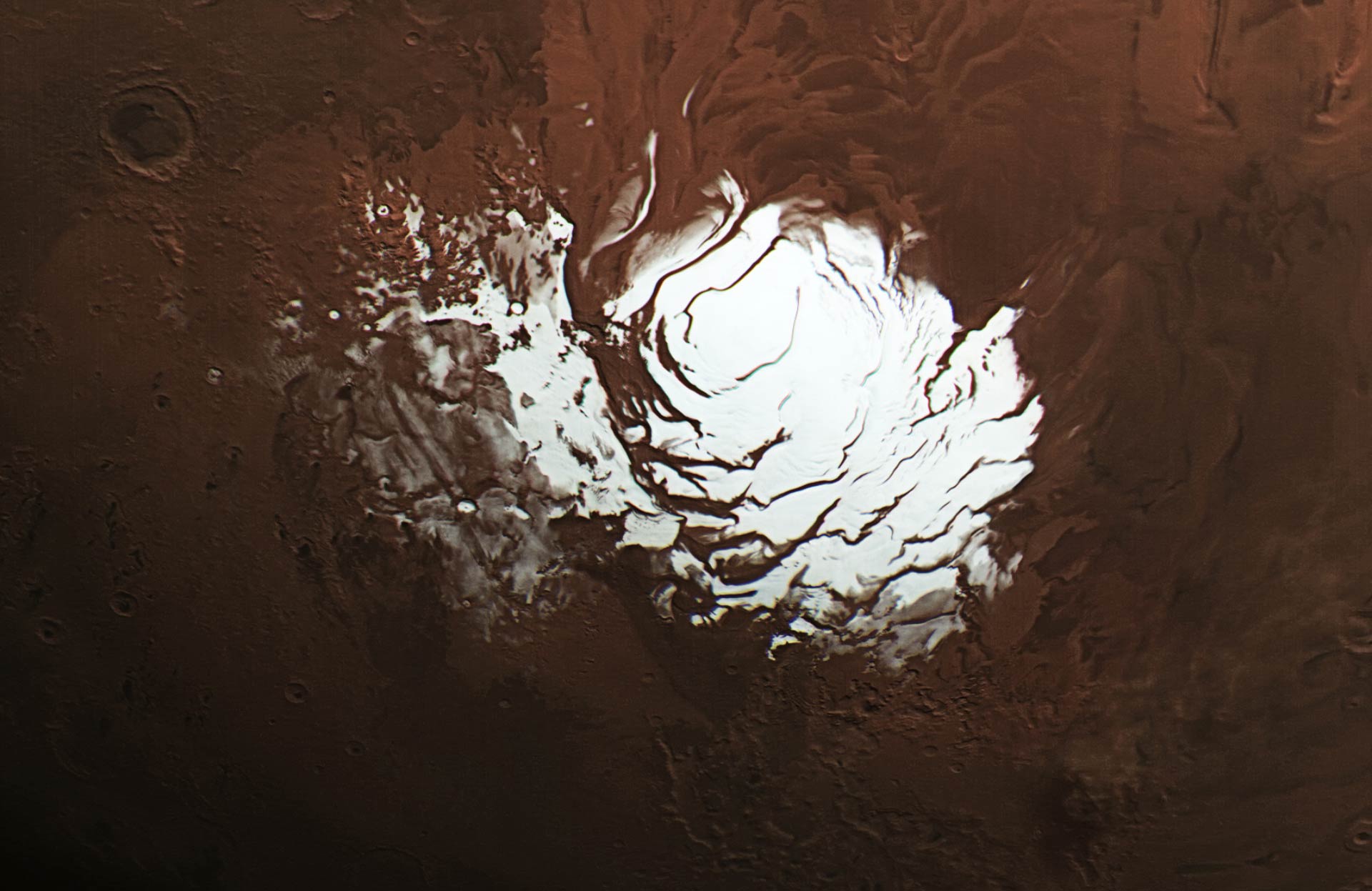Ever since 1971, when the Mariner 9 probe surveyed the surface of Mars, scientists have theorized that there might be subsurface ice beneath the southern polar ice cap on Mars. In 2004, the ESA’s Mars Express orbiter further confirmed this theory when its Mars Advanced Radar for Subsurface and Ionosphere Sounding (MARSIS) instrument detected what looked like water ice at a depth of 3.7 km (2.3 mi) beneath the surface.
These findings were very encouraging since they indicated that there could still be sources of liquid water on Mars where life could survive. Unfortunately, after reviewing the MARSIS data, a team of researchers led from Arizona State University (ASU) has proposed an alternative explanation. As they indicated in a recent study, the radar reflections could be the result of clays, metal-bearing minerals, or saline ice beneath the surface.
The study, which recently appeared in the Geophysical Research Letters, was led by Carver J. Bierson – a postdoctoral researcher at ASU’s School of Earth and Space Exploration (SESE). He was joined by Earth and Planetary Sciences Professor Slawek Tulaczyk of UC Santa Cruz (UCSC), ASU research associate Samuel Courville, and Nathaniel Putzig – a senior scientist with the Planetary Science Institute (PSI).

The MARSIS instrument works by directing a ground-penetrating radar beam towards the surface of Mars, then measuring the reflected echo. An underground zone of liquid water will have very different electrical properties from surrounding ice or rocks and will reflect very strongly. This technique allowed the Mars Express to create a subsurface map of Mars up to depths of 5 km (3 mi).
Back in 2018, an analysis of the subsurface radar reflections by a team of Italian researchers focused primarily on electrical permittivity, which controls the speed of radio waves within a material. The denser the material in question (water, ice, rock, etc.), the slower the waves will travel, and the power of the reflected waves will be affected as well. Due to its brightness, this bright radar reflection was interpreted as a large patch of liquid, briny water.
However, radar reflection can be bright due to a large contrast in either dielectric permittivity or electric conductivity. As Putzig explained in a PSI press release:
“It is not necessary to invoke liquid water at the base of the polar cap to explain the results of the MARSIS observations. Alternatives include clays, some metallic minerals, and salty ice. Because water — particularly in a liquid form — is so important to sustaining life, seeking out where it may exist on Mars today or in the past is of paramount importance to astrobiological studies. Ensuring that we fully consider other possibilities for reported detections of liquid water is crucial to the scientific process.”

In contrast, the new research focused on electrical conductivity, where contrasts in conductivity between materials could also explain the bright radar reflection. “Our team wanted to step back and ask if there were other materials besides liquid water that could cause these bright reflections,” said Bierson. “Salty ice or conductive minerals at the base of the ice sheet are less flashy, but they are more in line with the extremely cold temperatures at Mars poles.”
Dielectric permittivity or electric conductivity are interrelated, but most prior assessments of subsurface radar reflections have chosen to focus on the former and disregard the latter. Attributing them to caches of briny water was hardly unreasonable, and may have been influenced to a slight extent by wishful thinking. For decades, scientists have known that ca. 4 billion years ago, flowing water and possibly microbial life existed on the surface of Mars.
Since then, various lines of evidence have emerged that have suggested that much of this water retreated underground as the Martian climate underwent a massive transition, becoming the extremely cold, arid, and heavily irradiated environment we see there today. Knowing that there are abundant caches of water underground, especially in the mid-latitude regions, would also be a boon for future crewed missions to the Red Planet. Said Putzig:
“This choice led prior workers to the conclusion that liquid water – probably very salty in order for it to be liquid at the temperatures and pressures expected 1.5 kilometers below the surface of Mars’ south polar ice cap – is the most reasonable explanation for the high radar reflectivity. However, the work presented in this paper demonstrates that conductivity can be an important factor for some materials, and hence such materials provide a viable alternative explanation for the data.”

While this might feel a bit discouraging for those who believe we will find life on Mars, it is important to remember that this research is merely exploring all of the possibilities. Assuming that there is simply more ice beneath the South Polar Layered Deposits, it is still good news for those hoping to see astronauts explore the Martian South Pole in the coming years (or dream of seeing humans settle on Mars someday).
In short, the search for evidence of Mars’ past and subsequent evolution continues. This search has been ongoing and is currently picking up speed, giving scientists the opportunity to test long-held hypotheses and revise previously held notions. Every clue is yet another piece of the puzzle!
Further Reading: PSI

